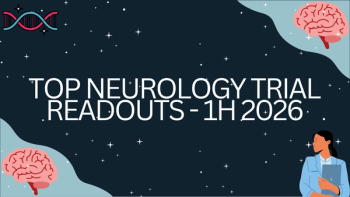
Potential Device for at-Home Parkinson Treatment
A Johns Hopkins team is designing the STIMband, a non-invasive brain-stimulating device that may provide at-home Parkinson treatment.
A non-invasive, brain-stimulating device now in development may one day allow Parkinson disease patients to ease their symptoms in the comfort of home.
The small, battery-operated device, dubbed the STIMband, uses external electrodes to deliver a low-level current to the motor cortex of the brain. It holds promise as the first step toward helping Parkinson disease patients to safely relieve their own symptoms at home or elsewhere without going to a hospital or doctor's office.
In an interview, one of the developers, Yousef Salimpour, a faculty member in the neurosurgery department at Johns Hopkins University, said: “Cortical stimulation could in the near future be another treatment approach for Parkinson disease patients. More than 14 studies show the benefit of transcranial direct current stimulation in Parkinson disease. All of them use short-term stimulation. We have devised a device the patient could take home and use for the long term.”
The head-banded shaped device, designed through a collaborative effort of a multidisciplinary team of neurologists, neurosurgeons, neuroscientists, and biomedical engineering students at Johns Hopkins, fits over a patient's head and positions spongy electrodes over the part of the brain that controls movement. By pushing a large button, a patient can apply painless electrical stimulation to those areas for up to 20 minutes a day at a doctor-prescribed level. The small amount of current into the brain is thought to change the level of dopamine.
“Brain stimulation is a technique for controlling Parkinson disease. What’s new is that, for first time, we have a way for the patient to deliver transcranial direct current stimulation through a specific device,” Salimpour said. “Our prototype might be useful specifically for Parkinsons symptoms.”
Preliminary tests with the device show some symptom improvement, but it has yet to be tested in clinical trials.
[[{"type":"media","view_mode":"media_crop","fid":"40892","attributes":{"alt":"","class":"media-image media-image-right","id":"media_crop_6623381829646","media_crop_h":"0","media_crop_image_style":"-1","media_crop_instance":"4246","media_crop_rotate":"0","media_crop_scale_h":"0","media_crop_scale_w":"0","media_crop_w":"0","media_crop_x":"0","media_crop_y":"0","style":"width: 150px; height: 200px; float: right;","title":"Dr. Salimpour with STIMband","typeof":"foaf:Image"}}]]Salimpour has been studying noninvasive brain stimulation therapy using transcranial direct current stimulation, which uses electrodes placed on the scalp to send electrical signals to the brain. In a paper now in press in the Journal of Neuroscience, he showed that motor symptoms improved in 40 Parkinson disease patients who were asked to perform a task before and after brain stimulation.
“We found that during brain stimulation the patients showed improvement in the task, and motor symptoms improved as well,” Salimpour said. “For 10 patients who were tracked for 1 month and had multiple stimulations, not only did motor symptoms improve, but their quality of life improved as well. When their symptoms were more controlled, the patients were more social and active.”
Parkinson disease causes 2 distinct symptoms – motor and non-motor, including cognitive issues, such as sleep and anxiety. “Our focus with the device is now on the motor cortex. If we change the target of the device to the frontal cortex, we might see some effect for non-motor symptoms as well. We may be able to use the device for controlling both motor and non-motor symptoms,” Salimpour said.
Currently, medication is used to treat these 2 symptoms separately, he noted.
[[{"type":"media","view_mode":"media_crop","fid":"40893","attributes":{"alt":"","class":"media-image media-image-right","id":"media_crop_3581586312564","media_crop_h":"0","media_crop_image_style":"-1","media_crop_instance":"4247","media_crop_rotate":"0","media_crop_scale_h":"0","media_crop_scale_w":"0","media_crop_w":"0","media_crop_x":"0","media_crop_y":"0","style":"width: 150px; height: 267px; float: right;","title":"STIMband prototype","typeof":"foaf:Image"}}]]The device does not need to be as precise as deep brain stimulation and can still hit the target regions of the brain just from measuring “landmarks” on the patient’s head, Salimpour explained. The device also allows the flexibility to target parts of the brain based on disease symptoms.
“The advantage of the device is delivery of safe, non-invasive brain stimulation. We don’t need to implant electrodes anywhere,” he said.
“We don’t claim the device is a substitute for current treatment. Patients who are resistant to medication may need deep brain stimulation, depending on their symptoms. We are trying to provide another treatment option based on long-term cortical stimulation.”
The next step is to finalize the design of the STIMband. The inventors have obtained provisional patents covering the device’s design. Another team of Johns Hopkins students is slated to take over the project in September to further enhance the design and move it closer to patient testing. One addition may be a wireless connection to allow a doctor to adjust a home patient's treatment level from a remote location.
“We need approval from FDA for the device before we can conduct clinical trials,” said Salimpour. “We still need to prove that it is safe and to show efficacy in the short-term and the long-term.” In preliminary tests no side effects have been noted.
“This could be an interesting, non-invasive approach to treat Parkinson disease,” he said. “We are close to something that can be used, based on this technology. We hope Parkinson patients will receive the benefit of this new technique at home very soon."
[[{"type":"media","view_mode":"media_crop","fid":"40894","attributes":{"alt":"","class":"media-image media-image-right","id":"media_crop_2999774448280","media_crop_h":"0","media_crop_image_style":"-1","media_crop_instance":"4248","media_crop_rotate":"0","media_crop_scale_h":"0","media_crop_scale_w":"0","media_crop_w":"0","media_crop_x":"0","media_crop_y":"0","style":"width: 150px; height: 267px; float: right;","title":"side view","typeof":"foaf:Image"}}]]
Newsletter
Keep your finger on the pulse of neurology—subscribe to NeurologyLive for expert interviews, new data, and breakthrough treatment updates.



























